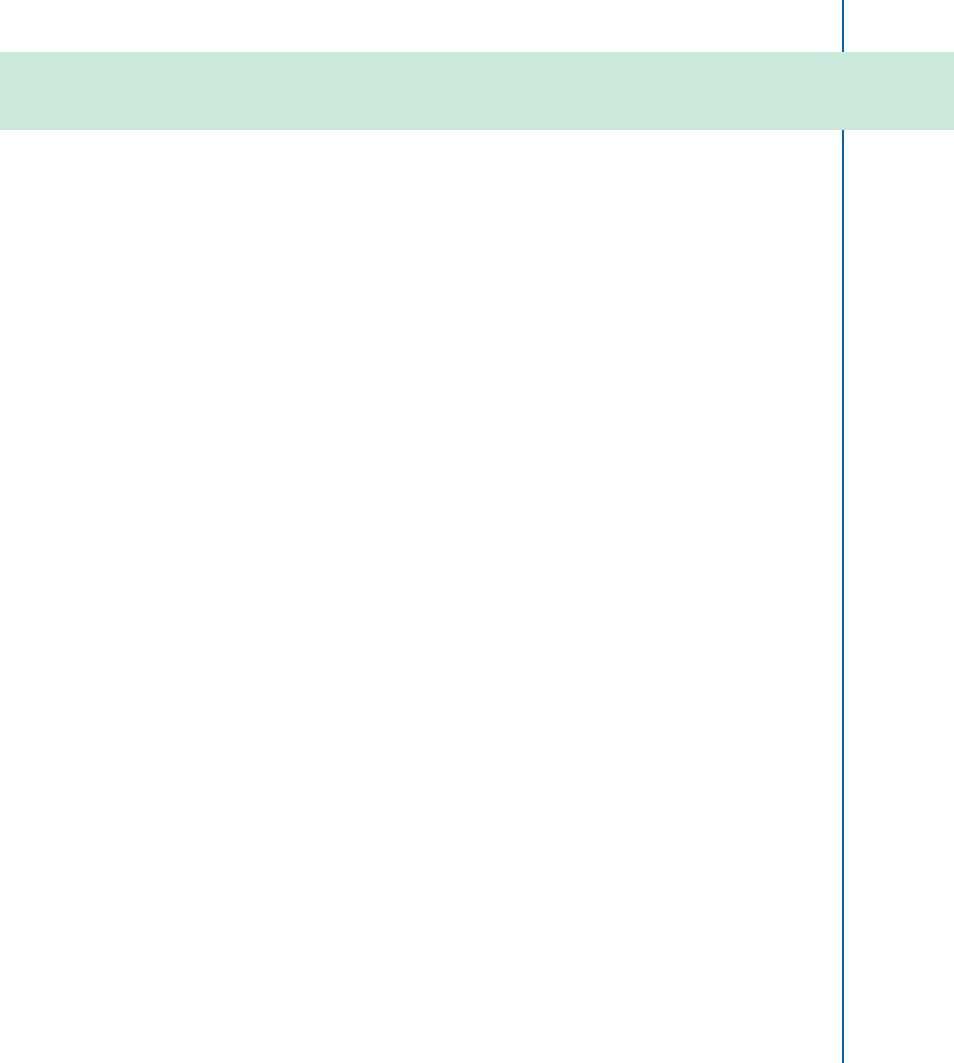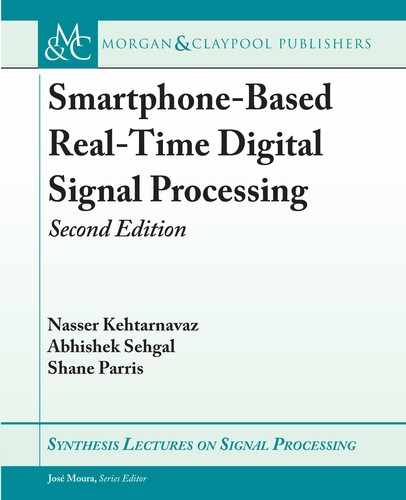
1
C H A P T E R 1
Introduction
Applied or real-time digital signal processing courses offered at many universities have greatly
enhanced students’ learning of signal processing concepts by covering practical aspects of imple-
menting signal processing algorithms. DSP processor boards are often deployed in these courses.
To a lesser extent, ARM-based boards such as Raspberry Pi [1] are utilized. A number of text-
books are available discussing how to implement signal processing algorithms on DSP boards,
e.g., [2–6]. is book is written to provide an alternative hardware platform which students can
use in a truly mobile manner and at no cost as it is already in their possession, that being their
own smartphones.
Not only do there exist hardware and software costs associated with equipping a teaching
laboratory with DSP or other types of signal processing boards, in many cases these boards are
confined to a specific teaching laboratory location. Taking advantage of the ubiquitous utilization
of ARM processors in mobile devices, in particular smartphones, this book covers an alternative
approach to teaching applied or real-time DSP courses by enabling students to use their own
smartphones to implement signal processing algorithms. Changing the hardware platforms that
are currently used in applied or real-time signal processing courses to smartphones creates a truly
mobile laboratory experience or environment for students. In addition, it relieves the cost burden
associated with using a dedicated signal processing board noting that the software development
tools for smartphones are free of charge and are well-maintained.
is book addresses the process of developing signal processing apps on smartphones in
a step by step manner. It shows how to acquire sensor data, implement typical signal process-
ing algorithms encountered in a real-time or applied digital signal processing course, and how
to generate output or display information. It should be noted that these steps are carried out
for both the Android and iOS operating systems and besides smartphones, the apps developed
can be run on any ARM-based mobile targets such as tablets. e laboratory experiments that
are included cover the following topics: signal sampling and i/o buffering, quantization effects,
fixed-point vs. floating-point implementation, FIR filtering, IIR filtering, adaptive filtering,
DFT/FFT frequency transformation, and optimization techniques to gain computational effi-
ciency.
1.1 SMARTPHONE IMPLEMENTATION TOOLS
e main challenge in this alternative approach to real-time or applied digital signal process-
ing courses lies in the difference between the programming environments on smartphones and
..................Content has been hidden....................
You can't read the all page of ebook, please click here login for view all page.
